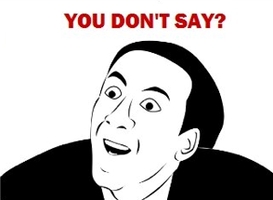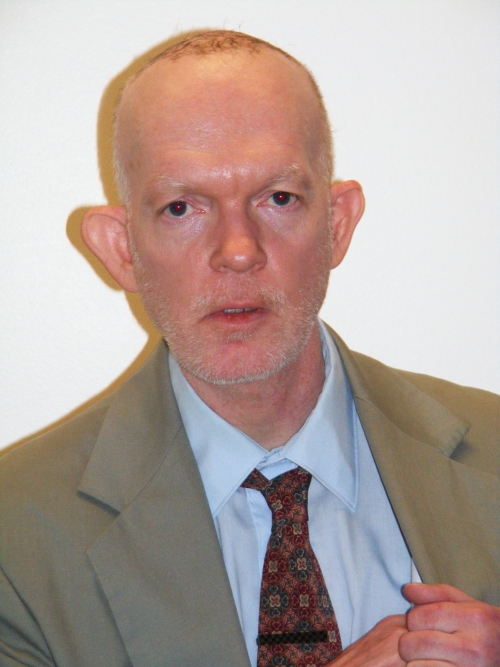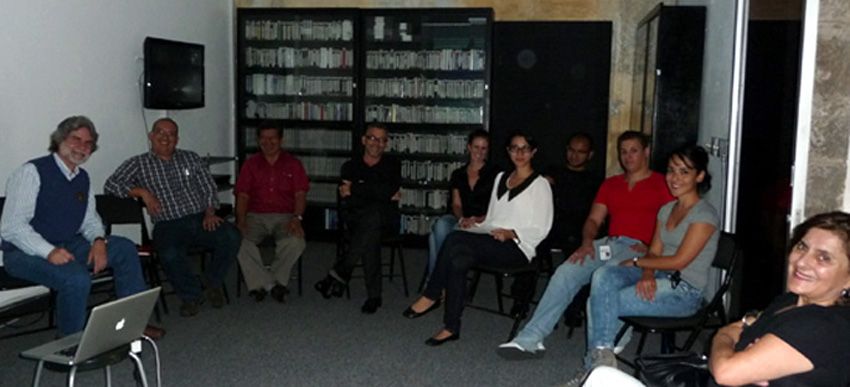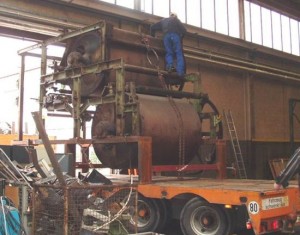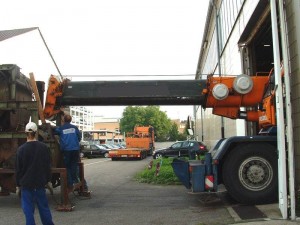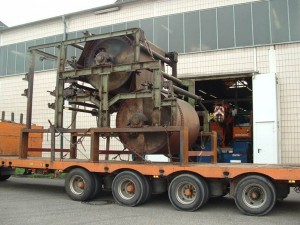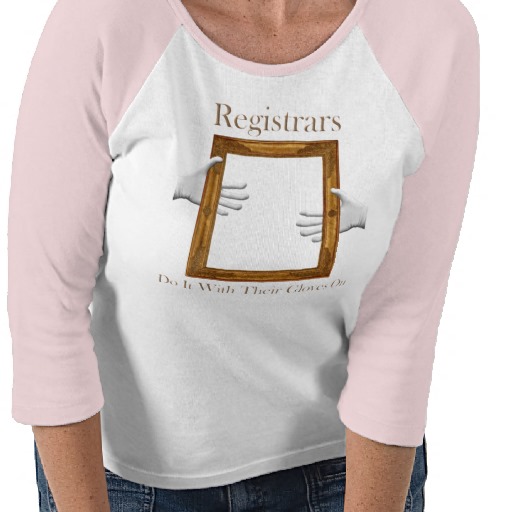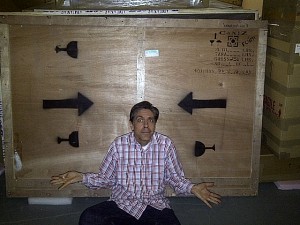Breaking News; Journalist discovers she’s a registrar
Tracey Berg-Fulton
 I remember the day I decided to go in to museum work quite clearly. I was sitting on a bench in the Ulster Museum in Belfast, Northern Ireland, having just finished interviews for a newspaper piece I was writing. As is the custom, it was a rainy gray day, and I took shelter in the museum.
I remember the day I decided to go in to museum work quite clearly. I was sitting on a bench in the Ulster Museum in Belfast, Northern Ireland, having just finished interviews for a newspaper piece I was writing. As is the custom, it was a rainy gray day, and I took shelter in the museum.
As I sat, I thought about what I had been doing – journalism – and asked myself if I could really sustain myself in it for thirty years.
The answer was a clear, resounding, heart-sinking, no. So having incurred thousands of dollars in educational debt to get to this point, what on earth will I do now?
And then I looked around me.
This. This is what I want to do. I had always loved history, art, libraries and museums, so why not make it my life officially?
I applied to an art history postgraduate program at the University of Glasgow on a whim, thinking that I’d be rejected out of hand, lacking British qualifications and only tangentially related undergraduate degrees in photography and journalism. I was shocked to be accepted to start in autumn of 2007.
At Glasgow, I was thrown headlong into research and writing, and took the opportunity to do work placement with a stained glass conservator at Glasgow Museums. Our work focused on an inventory of stained glass, and during that process I learned about the various roles within the museum. I couldn’t get enough of the objects and spending time in the vaults, and then I discovered that the person who has the most contact with the most stuff is, of course, the registrar.
My course was set. Famous last words, right?
I graduated in December of 2008, and returned to my hometown of Pittsburgh, Pennsylvania in the United States. I had heard about the recession in the US, but being in Scotland I hadn’t fully understood the impact. I began applying to every museum I could, and then any related businesses, and then just any job in general. Nothing.
Finally a connection introduced me to another connection that helped me get in to a volunteer role at the Carnegie Museums of Pittsburgh. Having had a job since I was 14, I was relieved just to be working, even for no pay. I also began volunteering at a small community run museum, creating an inventory of their collections.
Then in April of 2009, I had an accident while running that left me with a broken hip and temporarily unable to walk, sit, drive, work, or do anything but lie in bed. I lost six months of my life to my recovery.
After I recovered, I returned to my volunteer work at the Carnegie, and had a change of roles after a successful application, into a part-time position as an imaging technician. Not quite registrar work, but still interacting with lots of objects. I enjoyed my work, but I kept hoping for a registrar opening, and applying for open positions around the country.
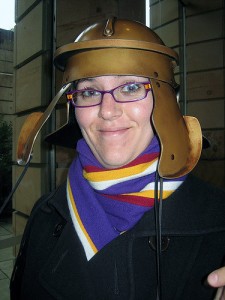 One of those applications was successful – and I left to take an assistant registrar position in Oklahoma in 2010. It was a wonderful learning experience, but the economy had made it so that I had to work in Oklahoma while my husband remained in Pennsylvania. Then came a string of health problems in my family, and the need to return home was too strong. I left my position with no museum job to come home to.
One of those applications was successful – and I left to take an assistant registrar position in Oklahoma in 2010. It was a wonderful learning experience, but the economy had made it so that I had to work in Oklahoma while my husband remained in Pennsylvania. Then came a string of health problems in my family, and the need to return home was too strong. I left my position with no museum job to come home to.
Returning to Pittsburgh was rewarding in that I was home with my family, but the job situation was dire. I returned to working retail with an outdoor retailer while I sorted out where I was going to go next.
Then one day it dawned on me- why not be a contract registrar? If there isn’t a job, why not create one for myself? One of the benefits of living in a mid-sized city, I discovered, is that there aren’t a lot of folks doing contract work here (presumably they’ve all been snapped up by clients already!).
I sought out a mentor from the Registrars Committee of the American Alliance of Museums, and began to network and mention that I was doing independent work. Then I filed my papers to incorporate as an LLC. I had a surprisingly strong response from the Pittsburgh community, and I was off and running.
Contract work really suited me- I got to be a registrar, but really, my title was more appropriately “fixer”. I loved solving strange problems for my clients, everything from figuring out how to ship a massive photograph across the country overnight to how to replace the handle of a toilet (hint: turn the plastic nut the opposite way from every other nut and bolt you’ve ever tightened). It was the perfect blend of art history, carpentry, power tools, and diplomacy. I made my own hours and got to choose my projects, which was a blessing when a family member was diagnosed with cancer.
But something was missing. While my dog is a wonderful listener, he’s not much of a conversationalist, so I desperately missed having colleagues. I missed having a collection that I know down to the finite detail. I missed having a building that I know like an old friend. I missed having semi-regular hours- what no one tells you about “flexible working” and working from home is that it really means you’re working 24 hours a day, answering e-mails, billing, doing taxes, doing actual client work, looking for clients, keeping up on best practices, networking, etc.
And so that brings me to today. I’m one month in to my full-time staff position as Registrar at the August Wilson Center for African American Culture. We are a young institution, and it is exciting to be able to help implement policies, troubleshoot challenges, and break new ground when needed. I’m happy to be working in an organization that serves an important cultural function in our city, and my work is incredibly rewarding.
It’s been a long and winding road to get to this point, but I’ve seen some amazing things along the way. I’ve had the pleasure of meeting and learning from so many of my colleagues at conferences, over coffee, and through the RC-AAM listserv. I also have the pleasure to serve as Chair of the Website Committee of the RC-AAM. Every day I learn and do something new. Every day I see the most amazing and intimate objects of civilization- from baptismal gowns to goalie pads. I get to indulge my love of shiny things. And I get to scratch my technology itch (and I’m still waiting for a responsive designed web-based database, developers!). What could be better?
Going forward, I hope to continue growing in my profession, and I hope to become more involved in the wider world of museums, and to actively participate in bringing museums to a 21st century visitorship.
Text: Tracey Berg-Fulton






 So, you’d like to hear about a typical day in the life of a collections person? Sorry, there’s no such thing. I’m designing a storage mount for a WWII gas mask. I’ve been doing this for about two weeks. I get to work on it, oh, maybe 10 minutes at a time, in between labeling a collection of hairpins, packing some Victorian era women’s clothes with acid-free tissue in acid-free boxes, updating the collections database, doing condition reports on the prints for the upstairs hallway exhibit, visiting a potential donor’s home to look at a collection of WWI-era baby clothes, getting a quote on having some posters framed, updating the database, supervising the volunteer doing data entry from our old catalogue cards, cleaning the Hezekiah Alexander House, washing the gloves we use to handle collections objects (mild detergent, rinse twice, no fabric softener and don’t let the cats sleep in the bag), updating the database, ordering new sleeves and boxes for the postcard collection, attending planning meetings, doing the homework for planning meetings, photographing a beaded jacket and purse, steaming out creases in a quilt, discussing the exhibit calendar for the next three years with Kris, oh, and did I mention updating the collections database?
So, you’d like to hear about a typical day in the life of a collections person? Sorry, there’s no such thing. I’m designing a storage mount for a WWII gas mask. I’ve been doing this for about two weeks. I get to work on it, oh, maybe 10 minutes at a time, in between labeling a collection of hairpins, packing some Victorian era women’s clothes with acid-free tissue in acid-free boxes, updating the collections database, doing condition reports on the prints for the upstairs hallway exhibit, visiting a potential donor’s home to look at a collection of WWI-era baby clothes, getting a quote on having some posters framed, updating the database, supervising the volunteer doing data entry from our old catalogue cards, cleaning the Hezekiah Alexander House, washing the gloves we use to handle collections objects (mild detergent, rinse twice, no fabric softener and don’t let the cats sleep in the bag), updating the database, ordering new sleeves and boxes for the postcard collection, attending planning meetings, doing the homework for planning meetings, photographing a beaded jacket and purse, steaming out creases in a quilt, discussing the exhibit calendar for the next three years with Kris, oh, and did I mention updating the collections database?
